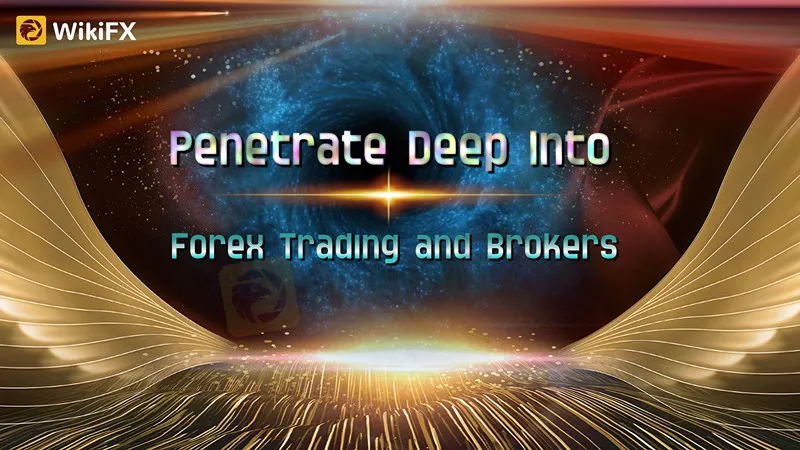简体中文
繁體中文
English
Pусский
日本語
ภาษาไทย
Tiếng Việt
Bahasa Indonesia
Español
हिन्दी
Filippiiniläinen
Français
Deutsch
Português
Türkçe
한국어
العربية
How To Use Technical Analysis In Forex Markets
Abstract:Technical analysis involves the use of a price chart, which provides a roadmap for past price behavior. A technical analyst relies on the past to predict the future.

When it comes to the global foreign exchange market, buyers and sellers of currencies determine the rates of one foreign exchange instrument versus others on a real-time basis. At the same time, governments manage the level of currency volatility to maintain stability. Technical analysis can be particularly useful in the currency markets as technical levels can provide clues about levels where government intervention is likely to occur.
Technical analysis includes support and resistance levels where currency pairs tend to find lows and highs. At the same time, price momentum indicators often signal where exchange rates are running out of steam on the up and the downside.
Futures markets for currency pairs reflect the price action in the OTC market
In the world of foreign exchange, the over-the-counter market is the most liquid and actively traded arena. The OTC market is a global and decentralized venue for all aspects of exchanging the currency of one country for another; it is also the largest market in the world. In April 2019, the average trading volume was $6.6 trillion per day. The OTC market operates twenty-four hours per day, except for weekends.
Futures markets for currency pairs are smaller, but they reflect the price action in the OTC market. When it comes to technical analysis, the futures market provides a window into the price trends and overall state of the strength or weakness of one currency versus another.
Volume and open interest metrics provide clues for price direction
The dollar versus the euro currency pair is the most actively traded foreign exchange relationship as both foreign exchange instruments are reserve currencies.
The chart of the dollar versus the euro futures contract displays the price action in the currency pair. The bar chart on the bottom reflects the daily volume, which is the total number of transactions. The line above volume is the open interest or the total number of long and short positions.

When volume and open interest are rising or falling with the price, it tends to be a technical validation of a price trend in a futures market. When the metrics decline with rising or falling prices, it often signals that a trend is running out of steam, and a reversal could be on the horizon. Volume and open interest are two technical metrics that aid technical traders looking for signs that a trend will continue or change.
Momentum indicators are powerful technical tools at times
Stochastics and relative strength indices can provide a window into the overall power of a trend in a futures market.

Beneath the weekly price chart, the slow stochastic is an oscillator that aims to quantify the momentum of a price rise or decline. Stochastics work by comparing closing prices with price ranges over time. The theory behind this technical tool is that prices tend to close near the highs in rising markets and near the lows in falling markets.
A reading below 20 indicates an oversold condition, while over 80 is a sign of an overbought condition. On the weekly chart of the euro versus the dollar currency pair, the reading of 31.42 indicated that the stochastic oscillator is falling towards oversold territory in a sign that the downtrend could be running out of steam.
The relative strength indicator compares recent gains and losses to establish a basis or the strength of a price trend. A reading below 30 is the sign of an oversold condition, while an overbought condition occurs with a reading above the 70 level. At 45.55 on the weekly dollar versus euro chart, the indicator points to a neutral condition in the currency pair.
Grasp Market Trends 24/7 on WikiFX APP!
Android: https://bit.ly/3kyRwgw | iOS: https://bit.ly/wikifxapp-ios

Disclaimer:
The views in this article only represent the author's personal views, and do not constitute investment advice on this platform. This platform does not guarantee the accuracy, completeness and timeliness of the information in the article, and will not be liable for any loss caused by the use of or reliance on the information in the article.
WikiFX Broker
Latest News
AI Fraud Awareness Campaign: "We're Not All F**ked"
Crypto.com Delists USDT and 9 Tokens to Comply with MiCA Regulations
How to Use Financial News for Forex Trading?
Fake ‘cyber fraud online complaint’ website Exposed!
Day Trading Guide: Key Considerations
NAGA Launches CryptoX: Zero Fees, 24/7 Crypto Trading
Scam Alert: 7 Brokers You Need to Avoid
AvaTrade Launches Advanced Automated Trading Tools AvaSocial and DupliTrade
What Determines Currency Prices?
Why More Traders Are Turning to Proprietary Firms for Success
Currency Calculator






